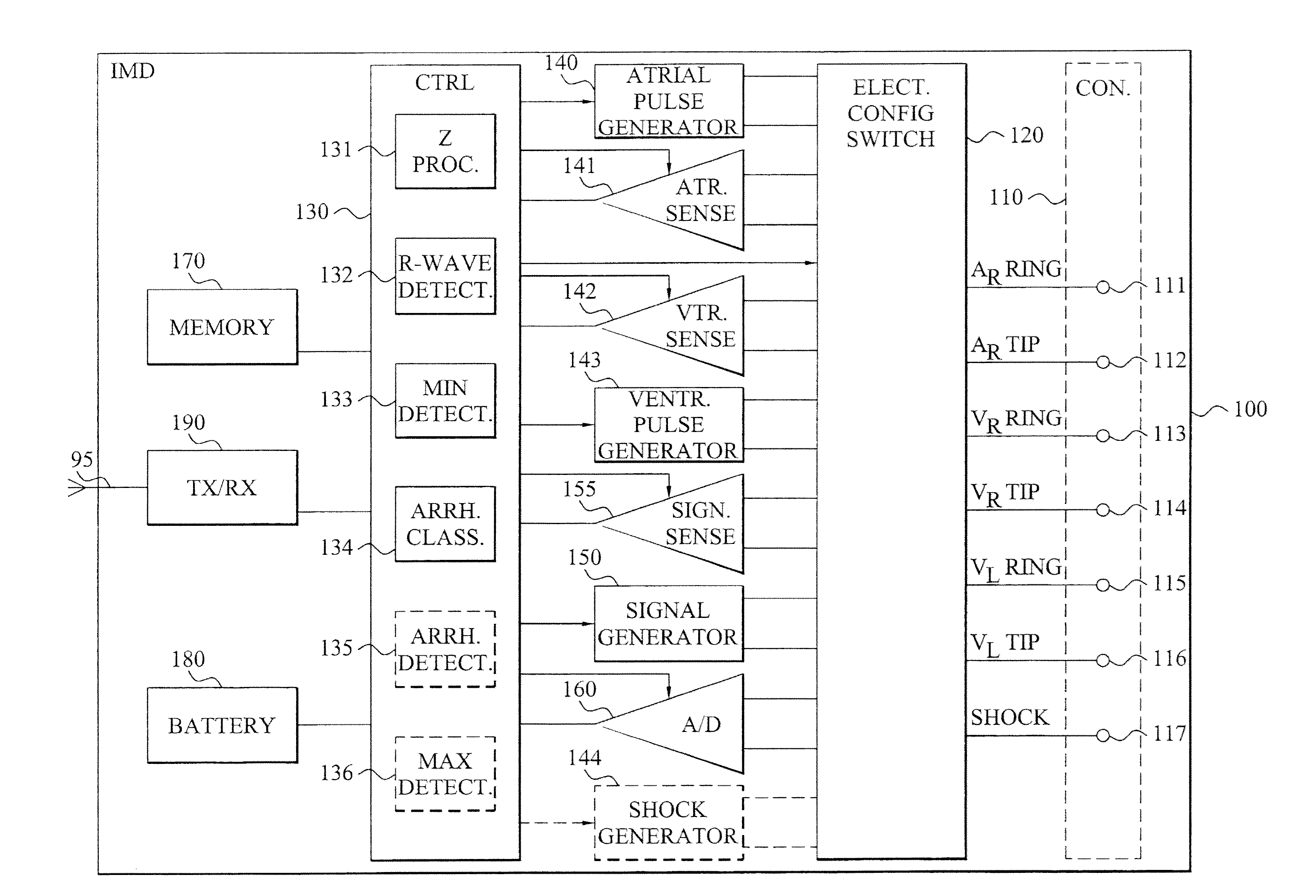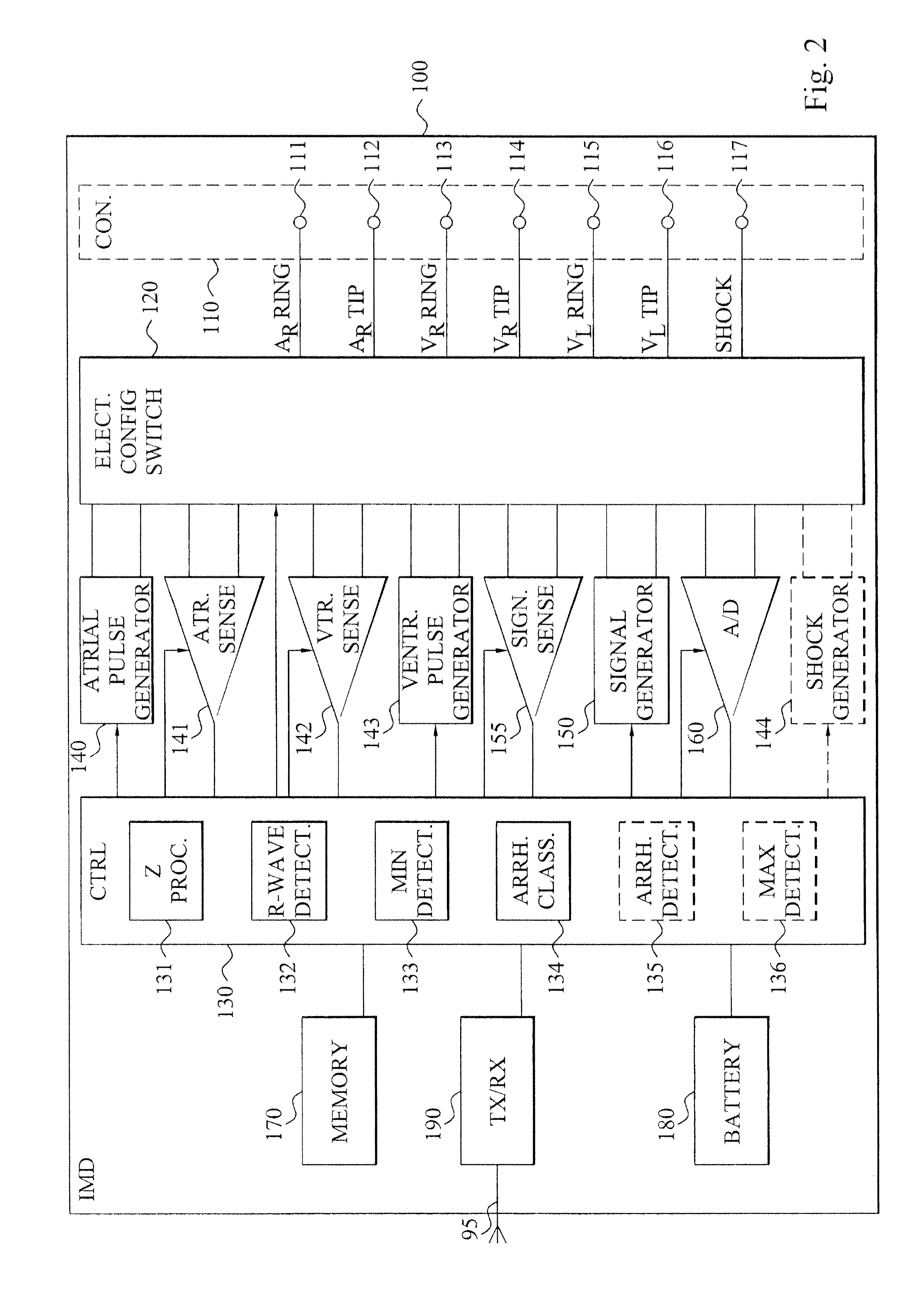Arrhythmia classification
a technology for arrhythmias and classification, applied in the field of arrhythmia classification, can solve problems such as battery depletion of devices and decrease in patient li
- Summary
- Abstract
- Description
- Claims
- Application Information
AI Technical Summary
Problems solved by technology
Method used
Image
Examples
Embodiment Construction
[0026]Throughout the drawings, the same reference numbers are used for similar or corresponding elements.
[0027]The present invention generally relates to arrhythmia classification and in particular to implantable medical devices and methods capable of classifying an arrhythmia of a patient's heart and thereby provide relevant diagnostic information that can be useful in selecting an appropriate treatment scheme to combat the arrhythmia,
[0028]Arrhythmia or cardiac dysrhythmia is a large and heterogenous group of conditions in which there is abnormal electrical activity in the heart. For instance, the heart may beat too fast or too slow, and may be regular or irregular. There is therefore a need for a technique that allows discrimination and classification between different forms of arrhythmia to thereby select the most appropriate treatment scheme to combat a detected and classified arrhythmia.
[0029]For instance, ventricular tachyarrhythmia relates to medical conditions in which the ...
PUM
 Login to View More
Login to View More Abstract
Description
Claims
Application Information
 Login to View More
Login to View More - R&D
- Intellectual Property
- Life Sciences
- Materials
- Tech Scout
- Unparalleled Data Quality
- Higher Quality Content
- 60% Fewer Hallucinations
Browse by: Latest US Patents, China's latest patents, Technical Efficacy Thesaurus, Application Domain, Technology Topic, Popular Technical Reports.
© 2025 PatSnap. All rights reserved.Legal|Privacy policy|Modern Slavery Act Transparency Statement|Sitemap|About US| Contact US: help@patsnap.com



